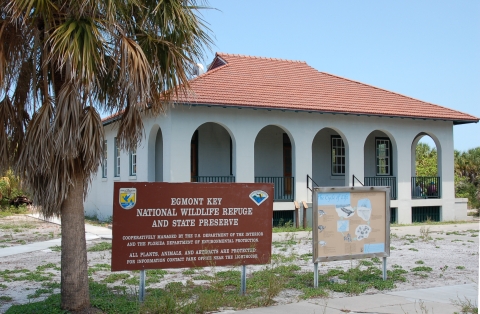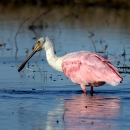Location and Contact Information
About Us
Egmont Key NWR was designated as a national wildlife refuge in 1974. Egmont Key is managed by the U.S. Fish and Wildlife Service as a national wildlife refuge national wildlife refuge
A national wildlife refuge is typically a contiguous area of land and water managed by the U.S. Fish and Wildlife Service for the conservation and, where appropriate, restoration of fish, wildlife and plant resources and their habitats for the benefit of present and future generations of Americans.
Learn more about national wildlife refuge to protect the island’s diverse natural, cultural, and historical features. Egmont Key is also cooperatively managed as a unit of the Florida Park Service as Egmont Key State Park. Egmont Key is on the National Register of Historic Places for playing a prominent role in Florida’s Seminole Indian Wars, the Civil War, and the Spanish-American War.
What We Do
Wildlife conservation is at the heart of the National Wildlife Refuge System. It drives everything on U.S. Fish and Wildlife Service lands and waters managed within the Refuge System, from the purposes for which a national wildlife refuge national wildlife refuge
A national wildlife refuge is typically a contiguous area of land and water managed by the U.S. Fish and Wildlife Service for the conservation and, where appropriate, restoration of fish, wildlife and plant resources and their habitats for the benefit of present and future generations of Americans.
Learn more about national wildlife refuge is established to the recreational activities offered to the resource management tools used. Using conservation best practices, the Refuge System manages Service lands and waters to help ensure the survival of native wildlife species.
Projects and Research
Staff monitors bird populations and collects and records observational data. Florida Park Service monitors sea turtle nesting sites. Other research projects include studying gopher tortoises, box turtles, and beach erosion.

